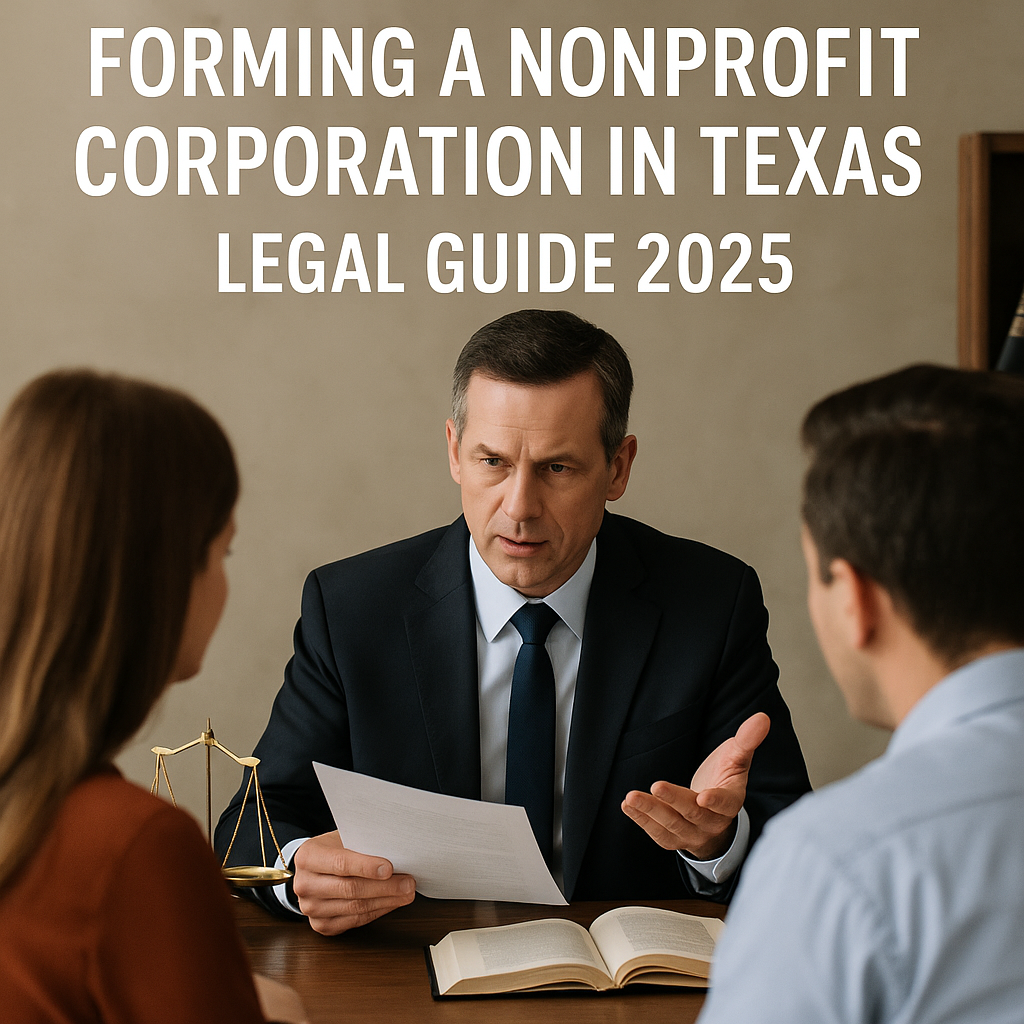
Nonprofit corporations play a crucial role in Texas communities—providing education, social services, religious activities, arts programs, and countless other public benefits. However, forming and maintaining a nonprofit corporation in Texas requires careful compliance with both state and federal law. Below is a practical overview of what constitutes a nonprofit under Texas law, how to form one, and what ongoing obligations apply.
1. What Is a Nonprofit Corporation in Texas?
A nonprofit corporation is a legal entity formed under the Texas Business Organizations Code (BOC), Chapter 22. Unlike for-profit corporations, a nonprofit’s purpose is not to generate profits for owners or shareholders. Instead, any surplus revenue must be reinvested into the organization’s mission.
Importantly, a Texas nonprofit corporation can make a profit—it just cannot distribute those profits to private individuals or insiders. The key test is whether the organization’s activities are primarily directed toward a public or charitable purpose rather than private gain.
Common examples include:
- Charitable organizations (e.g., food banks, shelters)
- Religious institutions
- Educational institutions
- Civic leagues or community associations
- Foundations and endowments
2. Forming a Nonprofit Corporation in Texas
The process of creating a nonprofit in Texas involves several distinct steps governed by the Texas Secretary of State and the Internal Revenue Service.
Step 1: Choose a Name
The name must be unique, distinguishable, and include a corporate designation such as “Inc.”, “Corporation”, or “Incorporated.”You can verify name availability through the Texas SOS Direct system.
Step 2: Prepare and File the Certificate of Formation
File Form 202 (Certificate of Formation – Nonprofit Corporation) with the Texas Secretary of State. Key elements include:
- Entity name and address
- Registered agent and office
- Purpose clause (must align with nonprofit purposes under state and federal law)
- Initial directors
- Statement of management structure (board of directors)
The filing fee is typically $25.
Step 3: Draft Bylaws
The bylaws are the organization’s internal operating rules—governing how directors are elected, meetings conducted, and records maintained. While not filed with the state, they are legally required and crucial for IRS recognition.
Step 4: Hold the Organizational Meeting
At this meeting, the board adopts bylaws, elects officers, and authorizes the filing of federal tax exemption applications.
Step 5: Obtain an EIN
Even if the nonprofit has no employees, it must obtain an Employer Identification Number (EIN) from the IRS.
Step 6: Apply for Federal Tax-Exempt Status
Most nonprofits seek 501(c)(3) status under the Internal Revenue Code. To apply, file Form 1023 (or Form 1023-EZ, if eligible). Approval from the IRS exempts the organization from federal income tax and allows donors to claim charitable deductions.
Step 7: Apply for Texas State Tax Exemptions
File with the Texas Comptroller for exemptions from:
- State franchise tax
- Sales and use tax
- Hotel occupancy tax (if applicable)
3. Governance and Legal Compliance
After formation, compliance is an ongoing obligation. Texas nonprofits must:
- Maintain a minimum of three directors, per BOC §22.204.
- Keep annual board minutes and records.
- File periodic Public Information Reports (PIR) if required by the Comptroller.
- Comply with charitable solicitation laws if fundraising from the public.
- Avoid private inurement or excessive benefit to insiders.
- File IRS Form 990 annually, unless exempt.
Failure to maintain compliance can jeopardize the organization’s good standing and tax-exempt status.
4. Key Legal Distinctions: Nonprofit vs. Tax-Exempt
A Texas nonprofit corporation is a state law entity—created under the BOC.
A tax-exempt organization, however, is a federal tax classification—granted by the IRS.
You can form a nonprofit without tax exemption, but most organizations pursue both to maximize operational and fundraising advantages.
5. Special Considerations
- Religious organizations enjoy broad First Amendment protections but must still file a Certificate of Formation.
- Homeowners associations and civic groups are often organized as nonprofits but may not qualify for 501(c)(3) status—many are recognized under 501(c)(4) or 501(c)(7).
- Foundations and charitable trusts may require additional compliance under the Texas Trust Code and Uniform Prudent Management of Institutional Funds Act (UPMIFA).
Conclusion
Forming and maintaining a Texas nonprofit corporation requires more than good intentions—it requires precise legal compliance and thoughtful governance. Whether you’re organizing a community charity, religious mission, or educational foundation, understanding the interplay between Texas state law and federal tax requirements is essential to long-term success.
For guidance on formation, governance, or compliance for your Texas nonprofit, contact David C. Barsalou, Attorney at Law, PLLCto ensure your organization is structured properly from day one.